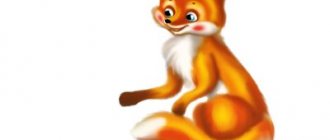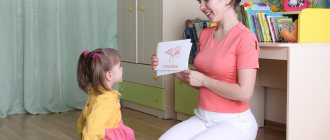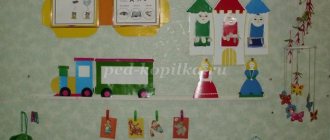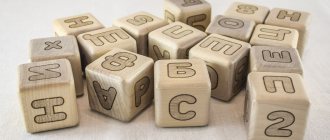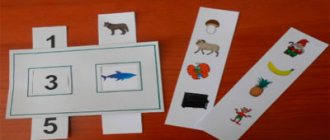Sound analysis of a word: what is it
First of all, it is worth giving a definition. So, sound analysis of a word is the determination of the order in which sounds are placed in a particular word and the characterization of their features.
Why do children need to learn to perform sound analysis of a word? To develop phonemic awareness, that is, the ability to clearly distinguish between sounds and not confuse words, for example: Tim - Dima. After all, if a child is not taught to clearly distinguish words by ear, he will not be able to write them down correctly. And this skill can be useful not only when studying the grammar of your native language, but also when studying the languages of other countries.
Phonetics
Our speech is divided into two large types: oral and written. The first, naturally, appeared long before the second. After all, initially people learned to exchange information using gestures and simple sounds. Then this gradually grew into words that formed one language or another. But soon there was a need to record everything that was said. This is how written language arose.
In this article we will talk about the features of oral communication. This part of the language is studied by a complex science - phonetics. It deals with the sounds that make up our speech. Each of them has its own characteristics and individual characteristics. Their study is included in sound analysis.
The order of parsing words by sounds
When performing a sound analysis of any word, you must first place the stress and then divide it into syllables. Then find out how many letters are in the word and how many sounds. The next step is to analyze each sound step by step. After this, it is calculated how many vowels and how many consonants are in the analyzed word. At first, it is better for children to be given simple one-syllable or two-syllable words for analysis, for example their names: Vanya, Katya, Anya and others.
When the child has gradually figured out how to correctly carry out analysis using simple examples, it is worth complicating the analyzed word examples.
Teaching sound analysis of words to children of senior preschool age. - presentation
Teaching sound analysis of words to children of senior preschool age
Contents: Didactic materialDidactic material. Methodical teaching techniquesMethodological teaching techniques. Introducing vowel sounds. Introducing consonant sounds. (hard and soft)Introduction to consonant sounds. Working with the sound circuit. Consolidating the skill of sound analysis of words. Consolidating the skill of sound analysis of words.
Contents: (cont.) Introduction to impact soundIntroduction to impact sound. Game exercises Game exercises. LiteratureLiterature. Check yourselfCheck yourself.
Sound analysis of a word means determining the order of sounds in a word, establishing the distinctive role of sound, and the main qualitative characteristics of sound.
What methodological techniques make the process of teaching sound analysis attractive to a preschool child?
Didactic material Pictures with sound diagrams Handouts Demonstrations
Chips - sounds Demonstration Handouts 6 cm. 10 cm Set for each child 2 cm 2 cm. 4 of each color (black -1)
Sound cards Demonstration Handout 40 cm. 15 cm. 2.5 cm 2.5 cm.
Subject pictures
Methodological teaching techniques The teacher pronounces words with intoned emphasis on the first sound. Children, following the teacher, pronounce the word in the same way, moving their pointers along their patterns and holding the pointers on the pronounced sound. Places a gray chip in the first cell. The teacher names the first sound, as it is heard in the word.
Determining the sequence of sounds in a word You need to identify the sequence of sounds by repeatedly pronouncing the word with sequential intonation of each sound. RRRAK RAAAK RA K
Representing a word in the form of a model A picture-scheme of its sound composition makes it possible to really imagine a word. A drawing-object is placed on it, under which there are a number of cells that are sequentially filled with chips (first gray, then colored). The number of cells corresponds to the number of sounds in the word.
Acquaintance with vowel sounds Sounds during the formation of which air passes freely (nothing “interferes” with it - neither lips, nor teeth, nor tongue) are called vowels. Children find such sounds in previously analyzed three-sound words.
Sound analysis of the word BOW When determining the vowel sound, lay out a red chip. Children learn that there are 6 vowel sounds in the Russian language [a] [o] [e] [i] [s] Children, with the help of a teacher, “check” all the sounds, pronouncing them, and observe whether anything in their mouth bothers them their pronunciation. [y]
Introducing consonant sounds (hard and soft) The hard consonant sound “big brother” is indicated by a blue chip. The soft consonant sound “little brother” is indicated by a green chip. Sounds during the formation of which air does not pass freely and encounters obstacles are called consonants
Sound analysis of the word MOON How many sounds are in the word MOON? 4 How did you know? Four cells under the picture. Pronounce the word so that the first sound is clearly heard. When we pronounce it, our tongue gets in the way. L is a hard consonant sound, denoted by a blue chip.
Familiarization with soft consonant sounds Sound analysis of the word FOX Pronounce the word so that the first sound is clearly heard. LLLISA Sound L - “big or little brother”? Small. The sound Ль is a soft consonant sound, we denote it with a green chip. Next, the word is analyzed by analogy.
Working with the sound chart Children read the word by pointing under the sound card, recording each sound. According to the instructions, sound chips are removed. Remove the sound Къ Remove the first sound, call it -НН Remove the hard consonant sound. Remove the first vowel sound, call it - And Remove the second sound And
Strengthening the skill of sound analysis of words
Sound analysis of the word YULA Extend the first sound in the complete word. Name the first sound in the word. What is he like? What kind of chip do we denote? Name the second sound in the word. What is he like? What kind of chip do we denote? Name the third sound in the word. What is he like? What kind of chip do we denote? Name the fourth sound in the word. What is he like? What kind of chip do we denote? Read the entry.
Familiarization with the stressed sound Perform a sound analysis of the word GUSI Name the vowel sounds of How many syllables are in the word? Two Which? GUSI Name the stressed syllable GU Say the word with the accent GUUUSI and
In a stressed syllable, the vowel sound is pronounced protractedly. The teacher reads the word with emphasis synchronously moving the pointer under the diagram. Children repeat The teacher says GUSIIIIGUSIIII Which sound is highlighted? And How to say it correctly? GUUUSI The vowel sound in a stressed syllable is called stressed, which is pronounced more drawn out in the word. A stressed vowel sound is indicated by a black chip.
Game exercises Why did you decide this? 1 2 Match the diagrams to the pictures
Perform a sound analysis of the word BEETLE Change the diagram so that you get the word BEETLES Change the scheme
Perform a sound analysis of the word MOUSE Change the diagram so that you get the word BEAR
Match the words to the diagrams Vegetables, fruits
Literature: Teaching preschool children to read and write / L.E. Zhurova, N.S. Varentsova, N.V. Durova, L.N. Nevskaya / Ed. N.V. Durova.-M., 2001.
Test yourself Which word does the diagram go to?
WRONG!
RIGHT!
Sound analysis of a word: diagram
When working with very young children, special colored cards are used to better assimilate information.
With their help, children learn to create a sound analysis scheme.
The scarlet card is used to represent vowel sounds. Blue - hard consonants, green - soft. To indicate syllables, two-color cards in the same color scheme are used. With their help, you can teach your child to characterize sounds and whole syllables. You also need a card to indicate stress and a card to show the division of the word into syllables. All these designations, which help teach a child to make a sound analysis of a word (the diagram plays an important role in this), are approved by the official school curriculum in Russia.
How to perform
Now you can create an algorithm that performs sound analysis of a word. The scheme is simple:
- First, we divide the word into syllables.
- Next, we write the letters that make it up in a column.
- Now for each we select the appropriate sound.
- We characterize each of them according to the characteristics described above.
- We count the number of sounds and letters.
- If their numbers do not match, we explain why this phenomenon occurred.
Let's give an example. Let's take the word "ceiling":
- This word has three syllables: po-to-lok (3 vowels, therefore the corresponding number of syllables).
- The letter P has the sound <П>. It is consonant, pronounced without vibration at the larynx, and therefore dull. It is also solid and has a pair <B>.
- The letter O has the sound <A>. It is vowel and has no accent.
- The letter T has the sound <Т>. It is a consonant and is pronounced unvoiced. It is not softened and therefore hard. In addition, it has a voicing pair <Д>.
- The letter O has the sound <A>. It is vowel and unstressed.
- The letter L stands for the sound <Л>. It is consonant, has no softening - hard. Pronounced with vibration at the larynx - sonorous. This sound has no pair.
- The letter O has the sound <О>. It is a vowel and, in this case, stressed.
- The letter K stands for the sound <К>. Consonant, pronounced like a voiceless consonant, has a voicing pair <Г>, hard.
- To summarize: this word has 7 letters and 7 sounds. The number is the same, no linguistic phenomena are observed.
Sound word analysis for preschoolers is much simplified.
Children need to learn that the pronunciation of a word and its spelling are very often different. When learning reading and writing skills, children gain their first understanding of the difference between spoken and written language. Thus, it is enough for the teacher to explain that some letters, like soft and hard signs, have no sounds at all. But there are no words starting with the letter Y in the Russian language.
Vowel sounds and their brief characteristics. Diphthongs
Before you start analyzing a word, it is important to know what features all phonetic sounds (vowels/consonants) have. When teaching children in the early stages, it is necessary to provide information only about the simplest properties; the child will learn everything else in high school.
Vowel sounds (there are six of them: [o], [a], [e], [s], [u], [i]) can be stressed/unstressed. Also in Russian there are letters that in a certain position can produce a pair of sounds - ё [yo], yu [yu], ya [ya], e [ye].
If they follow consonants, they sound like one sound and add softness to the preceding sound. In other positions (the beginning of a word, after vowels and “ъ” and “ь”) they sound like 2 sounds.
Vowels
One of the most important parts of our spoken language is the presence of vowels. They are so named based on their main function - to transmit long-lasting sound with the voice. There are six of them in Russian: A, O, U, Y, I, E.
It must be remembered that the number of letters does not always coincide with the number of sounds. For example, the word “south” has 2 letters, but at the same time 3 sounds: “yuk”. A letter-sound analysis of a word should show that oral speech is different from the way we write.
Vowels make up syllables in words. It is by their number that they determine how many parts the word is divided into:
- pal-ka - there are 2 syllables because it has two vowels;
- som - 1 syllable, since there is one vowel.
In addition, you need to know the features of letters such as e, ё, yu, ya. They, unlike all the others, can form two sounds - a vowel in combination with Y:
- Yo (y+o);
- E (y+e);
- Yu (y+y);
- I (y+a).
This phenomenon is observed in cases where the listed sounds are used:
- after soft or hard signs (pouring, zealous);
- after a vowel (bigЯ, poyas);
- at the beginning of the word (Yula, El).
Very often, when performing a sound analysis of a word (the diagram is given below), children make mistakes precisely in parsing these vowels.
All the other characteristics that vowels have are quite simple. Especially those that are studied in the school curriculum. Only two signs are considered: stress or unstress.
Brief characteristics of consonants
There are thirty-six consonant sounds in our language, but they are represented graphically by only twenty-one characters. Consonants are hard and soft, as well as voiced and voiceless. They also may/may not form pairs.
The table below lists voiced and unvoiced sounds that can form pairs, and those that do not have this ability.
It is worth remembering: the consonant sounds [th`], [ch`], [sh`] are soft in any position, and the consonants [zh], [ts], [sh] are always hard. The sounds [ts], [x], [ch`], [sch`] are absolutely always unvoiced, [m], [n], [l], [р], [й`] are (sonorous) or voiced .
Soft and hard signs do not produce sounds. The soft sign makes the previous consonant soft, and the hard sign plays the role of a sound separator (for example, in Ukrainian the apostrophe plays a similar role).
Consonants
Before performing a sound analysis, you need to know the features and consonants. There are many more of them than vowels. The Russian language has thirty-seven of them.
Consonants have different characteristics:
- Softness or hardness. Some sounds can be pronounced without softening: sea (m - hard). Others, on the contrary: measure (m - soft).
- Voicedness or deafness. When a sound is pronounced with vibration and voice, it is called voiced. You can put your palm on your larynx and feel it. If vibration is not felt, then it is deaf.
- Pairing. Some consonants have their opposite. Usually in terms of sonority and deafness. For example: v (sound) – f (deaf), z (sound) – s (deaf).
- Some consonants are pronounced as if “in the nose”. They received the corresponding characteristic - nasal.
